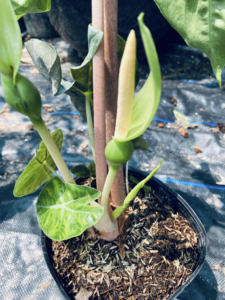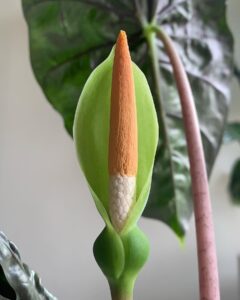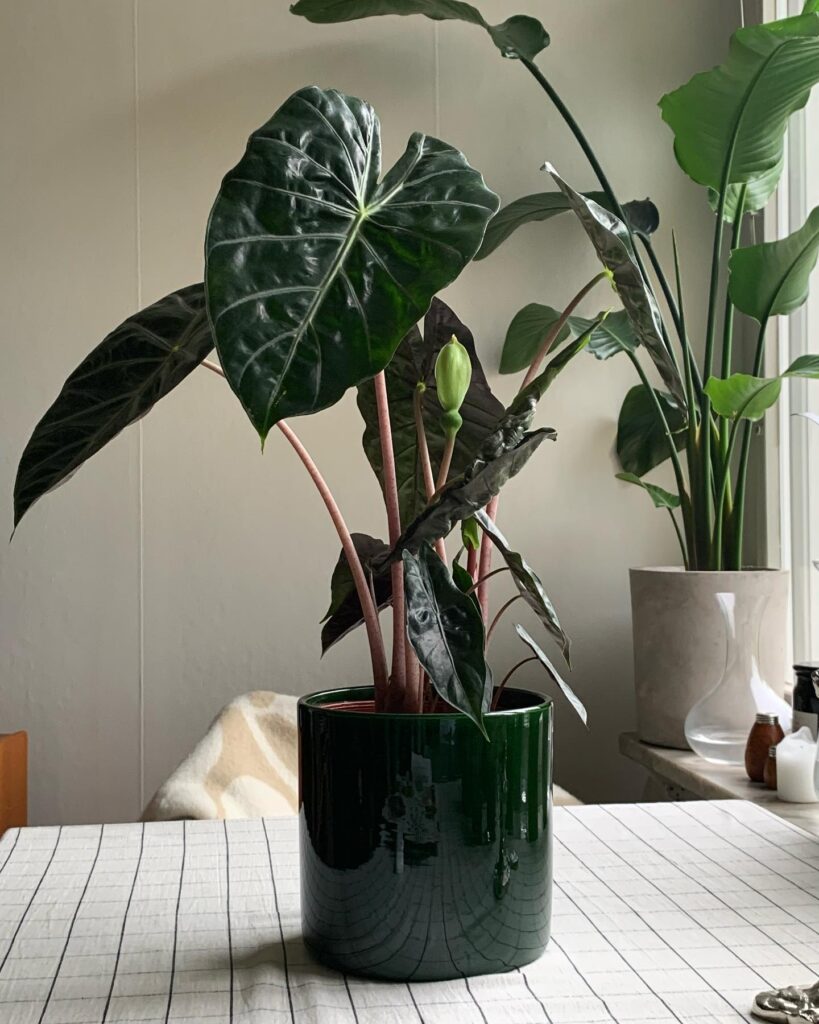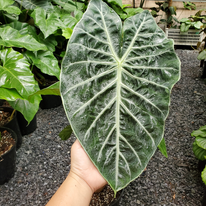Basic Information
Welcome to our plant care blog! In this article, we will explore Alocasia Pink Dragon, an exotic indoor plant from Southeast Asia and Australia. Our goal is to provide you with expert advice on creating the perfect environment for optimal growth. Join us on this journey of plant care, and let’s help your Alocasia Pink Dragon thrive!



Light
Alocasia Pink Dragon thrives in medium to bright, indirect sunlight. Direct sun can be harsh, leading to scorched leaves, while low light may impede its growth. An ideal spot is near a window with filtered light, providing the plant with enough brightness without the intensity of direct rays. A balance of light is crucial, as it impacts not only the health but also the color and size of the leaves. If your home lacks natural light, consider using a grow light to supplement, ensuring your Alocasia receives around 6 hours of indirect sunlight daily.
Water
Watering your Alocasia Pink Dragon is a delicate balance. The soil should be consistently moist but never waterlogged. Overwatering can lead to root rot, a common issue with these plants. It’s best to water when the top 2-3 inches of soil feel dry. In warmer months, the plant will require more frequent watering, while in cooler months, it’s essential to reduce the frequency. Always use lukewarm water to avoid shocking the plant’s roots, and ensure your pot has good drainage to prevent standing water.
Soil
The right soil mix is vital for Alocasia Pink Dragon. It prefers a well-draining, aerated, and nutrient-rich medium. A blend of potting soil, perlite, and peat moss or coco coir is ideal. This mix allows for proper drainage while retaining enough moisture to keep the roots hydrated. The soil should not be overly dense, as this can lead to water retention and root rot. Periodic refreshing of the topsoil or complete repotting can help maintain soil health and provide the necessary nutrients for growth.
Tip: Occasionally loosen the soil to improve aeration and water penetration without disturbing the roots. This promotes healthy root growth.
Temperature
Alocasia Pink Dragon enjoys a warm and stable environment typical of its tropical origin. The ideal temperature range is between 18-25ºC (64-77ºF). Protect the plant from sudden temperature fluctuations, which can stress it and lead to leaf drop. Avoid placing your Alocasia near cold drafts, such as open windows or air conditioning vents, and ensure it’s not exposed to extreme heat sources like radiators. Consistency in temperature is key to maintaining a healthy plant
Humidity
Around 60-70% high humidity levels are ideal for the Alocasia Pink Dragon. These plants love a moist environment, similar to their natural tropical habitat. To increase humidity, use a humidifier, place the plant on a pebble tray with water, or mist it regularly. Grouping it with other plants can also help create a microclimate with higher humidity. However, ensure good air circulation to prevent fungal infections, especially if you’re increasing humidity artificially.
Tip: Instead of misting, use a pebble tray with water underneath the plant’s pot to maintain consistent humidity without wetting the leaves directly.
Fertilizer
To achieve optimal growth for your Alocasia Pink Dragon plant, use a balanced liquid fertilizer with an N-P-K (Nitrogen-Phosphorus-Potassium) ratio of 10-10-10 or 20-20-20. Preferably organic, fertilize every 2-4 weeks at only half the recommended strength in spring and summer. Don’t fertilize in fall and winter. Water the plant before and after fertilizing. Flush the soil regularly to maintain soil health. Opt for aroid or tropical plant-specific fertilizers for the best results, but avoid over-fertilizing.
Growth Rate
The Alocasia Pink Dragon is a moderately fast grower, especially in optimal conditions. In its active growing season, it can produce new leaves monthly. It can reach up to 4 feet in height with proper care, depending on factors like light, humidity, and nutrition. Be patient and provide consistent care; your Pink Dragon will flourish and grow. Regular pruning of yellow or damaged leaves encourages healthy new growth.
Tip: Prune older, larger leaves at the base to encourage new growth and maintain a vibrant appearance. This also helps the plant focus its energy on new, healthy leaves.
Pet Safety
Alocasia Pink Dragon is toxic to humans and pets due to calcium oxalate crystals. It can cause mouth, throat irritation, difficulty swallowing, and breathing. Keep it away from kids and pets. If ingested, seek immediate medical attention.
Grow in Semi-Hydro
- Alocasia plants excel in Semi-hydroponics (LECA/Pon) due to their natural inclination for root growth and humidity.
- Successfully transitioning Alocasia to Semi-hydroponics is enhanced with a Nutrient Stagnant Wicking (NSW) setup.
- Alocasia roots adapt seamlessly to the water in LECA/Pon, with quick resolution of any root hair issues in NSW setups.
- Fertilizer includes a nutrient mix concentration of approximately 800-1000ppm.
- These plants are versatile in different temperature and humidity settings, thriving in controlled environments.
- Long-term care involves maintaining a constant water reservoir and performing occasional system flushes for sustained growth.
Tips
- Rotate your Alocasia Pink Dragon occasionally to ensure even growth and prevent the plant from leaning toward the light source.
- If you notice guttation (droplets on leaves), it’s a sign of high water uptake and usually not a concern. However, check for overwatering if you see yellow leaves.
- Clean the leaves with a damp cloth to remove dust, helping the plant photosynthesize more efficiently.
- Be attentive to the signs your plant shows. Yellow leaves can indicate overwatering, while brown tips often suggest low humidity.
- If you plan to report, do it in spring or early summer, and always use a pot only slightly larger than the previous one to avoid overwatering issues.
Caring for the Alocasia Pink Dragon requires patience and attention. With proper knowledge, it can be a rewarding experience and a great addition to your indoor garden.
Happy planting! 🌱


